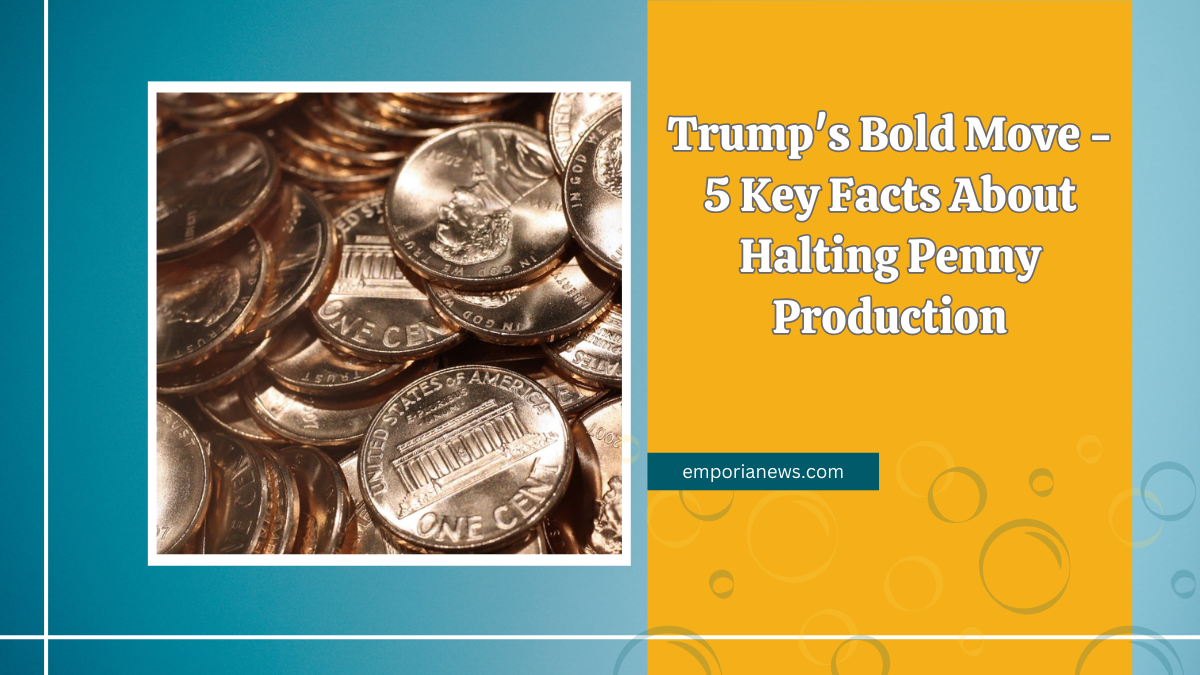In a surprising announcement, President Donald Trump has directed the U.S. Treasury to cease the production of pennies, citing the high costs associated with minting the one-cent coin.
This decision has sparked discussions about the future of U.S. currency and the implications of eliminating the penny.
Rising Production Costs
The U.S. Mint has reported that producing a single penny costs more than its face value. In the fiscal year 2024, each penny cost approximately 3.7 cents to manufacture, leading to a loss of $85.3 million on nearly 3.2 billion pennies produced.
Historical Context
The penny has been a staple of U.S. currency since 1793, featuring President Abraham Lincoln since 1909.
However, debates over its relevance have persisted for decades. Previous legislative efforts to eliminate the penny, such as those by former Representative Jim Kolbe and the late Senator John McCain, have been unsuccessful.
International Precedents
Several countries have successfully phased out their low-denomination coins. Canada stopped producing its penny in 2012, citing similar concerns over production costs and the coin’s diminishing utility in everyday transactions.
Public Opinion
Public sentiment has shifted over time, with a 2022 poll indicating that 58% of U.S. voters support discontinuing penny production.
Critics argue that the coin is a financial burden and unnecessary in modern transactions, while supporters claim it helps keep consumer prices lower and supports charities.
Potential Economic Impact
Eliminating the penny could lead to rounding cash transactions to the nearest five cents. Studies suggest that this rounding would have a negligible impact on consumers, as prices would round up or down in a balanced manner.
However, some experts caution that the effects on pricing and charitable contributions should be carefully considered.
| Year | Number of Pennies Produced (Billions) | Cost per Penny (Cents) | Total Cost (Millions USD) | Net Loss (Millions USD) |
|---|---|---|---|---|
| 2021 | 7.4 | 2.1 | 155.4 | 0 |
| 2022 | 5.9 | 2.5 | 147.5 | 0 |
| 2023 | 4.5 | 3.07 | 138.15 | 0 |
| 2024 | 3.2 | 3.7 | 118.4 | 85.3 |
The table above illustrates the rising costs associated with penny production over recent years, culminating in a significant net loss in 2024.
In conclusion, President Trump’s directive to halt penny production marks a significant shift in U.S. currency policy. While the move aims to reduce wasteful spending, it also raises questions about the future of cash transactions and the potential need for adjustments in pricing strategies.
FAQs
What prompted the decision to stop penny production?
The primary reason is the high cost of producing pennies, which exceeds their face value, leading to substantial financial losses.
How will this affect everyday transactions?
If the penny is eliminated, cash transactions may be rounded to the nearest five cents. Electronic transactions would remain unaffected.
Are other coins facing similar issues?
Yes, the nickel also costs more to produce than its face value, prompting discussions about its future as well.




